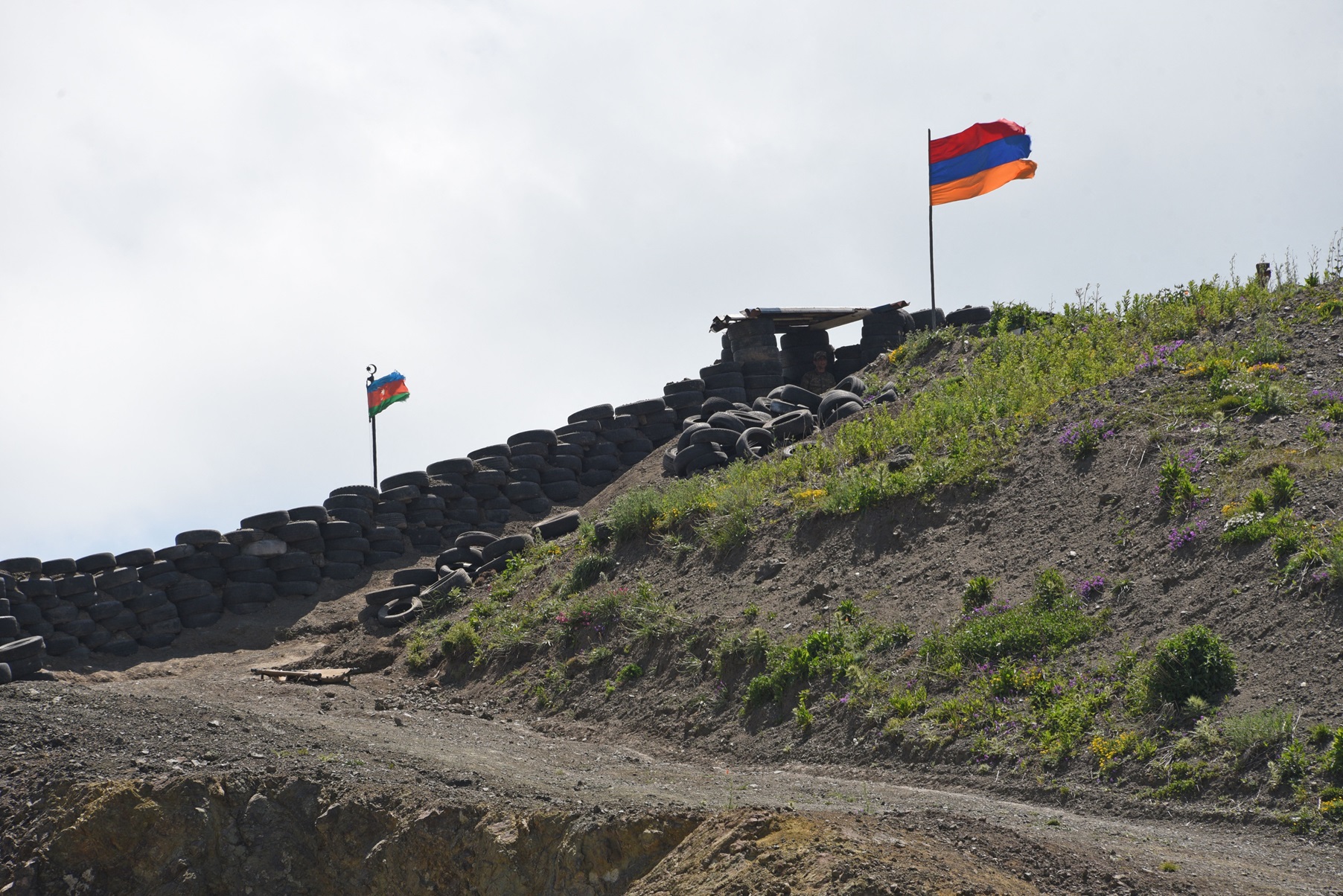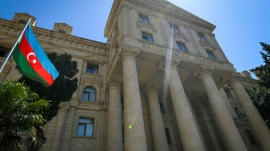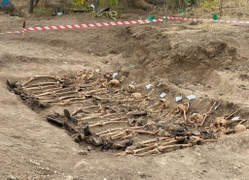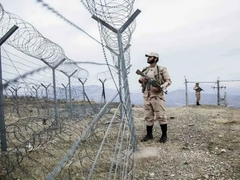Armenian sappers commenced on Monday mine-clearance operations in the territories adjacent to the Saint Mary Church in village of Voskepar (Armenian version of Ashagi Askipara), a villager informed the local media.
A team of 20-25 sappers has been involved in the demining, which paves the way for border delimitation processes that gained momentum following an agreement last week for the return of four border villages to Azerbaijan.
Previously, residents of the village attempted to halt the mine-clearance efforts, protesting the return of the territories to Azerbaijan. However, following the delimitation agreement with Baku, the border will pass near the church that remains under Yerevan’s control.
The government of Armenia has reportedly deployed law enforcement groups, including the police special forces, to ensure the safety of the deminers. The country’s deputy prime minister is expected to meet with the locals to ease the tensions.
On April 19, following the eighth meeting of the state commissions for border delimitation, the Ministry of Foreign Affairs of Armenia announced that Armenia and Azerbaijan agreed to commence the delimitation starting from the Tavush (Armenian version of Tovuzgala) region and finalize the draft regulations for the joint commission's activities.
The agreement provides for Armenia’s withdrawal from four border villages of Azerbaijan, including Baganis Ayrim, Ashagi Askipara, Kheyrimli, and Gizilhajili. These villages have been under Armenian occupation since the First Karabakh War (1991-94).
The bilateral agreement, without foreign mediators, between Baku and Yerevan marks a significant step towards the peaceful resolution of border conundrum between the two countries. The parties have agreed that they will base the delimitation process on the 1991 Alma-Ata Declaration. Signatories of the declaration, including Armenia and Azerbaijan, agreed to recognize and respect each other’s territorial integrity and the inviolability of the existing borders. The sides also agreed to continue the delimitation process on all other parts of the border, including enclave and exclave issues.
US Secretary of State Antony Blinken hailed the agreement between Baku and Yerevan as a significant step towards durable peace.
“We welcome the announcement that Armenia and Azerbaijan have agreed upon the 1991 Alma Ata declaration as the basis for border delimitation between the two countries. This is an important step towards concluding a durable and dignified peace agreement,” Blinken wrote on X.
Starting in the late 1980s, Armenia’s unfounded territorial claims and aggression against Azerbaijan extended beyond the Karabakh (Garabagh) region to other regions of Azerbaijan. Since the early 1990s, the villages of the far western Gazakh district of Azerbaijan, situated on the border with Armenia over 100 kilometers northwest of the Karabakh region, have been under attack by armed Armenian forces. At that time, the Soviet Union government had ordered the confiscation of all types of weapons from the population and government offices in the Gazakh region, leaving the local population defenseless against the Armenian military.
Between 1990 and 1992, the Armenian military forcibly expelled the unarmed local population from seven villages in Gazakh, including Sofulu, Barkhudarli, Baganis Ayrim, Gizilhajili, Yukhari Askipara, Ashagi Askipara, and Kheyrimli. Over seven thousand people were brutally displaced from the occupied villages and settled in temporary residential areas across the Gazakh district. Today, some of the occupied villages of Gazakh are inhabited by Armenians who were illegally relocated, while others remain in ruins following the conflict.
In Nakhchivan, the village of Karki was seized by the Armenian military. Historical sources indicate that in the 1930s, the leadership of the USSR secretly transferred a large piece of land surrounding Karki to Armenia. Two Armenians, Gadakchiyan and Isakhyan, who were working in the Central Executive Committee of Azerbaijan SSR at the time, signed the protocol for the transfer of these lands to Armenia. To prevent discontent among the local Azerbaijani population, a small area containing Karki was kept within Soviet Azerbaijan, while an area of over 900 hectares around the village was ceded to Armenia based on a fake document. This resulted in the complete isolation of Karki from Nakhchivan Autonomous Republic of Azerbaijan, as it became an enclave surrounded by Armenia.
Karki was finally occupied by Armenian forces in 1990 and was renamed Tigranashen by the Armenian government. Nearly 1,000 people were expelled from the village and relocated to the village of Yeni Karki (New Karki) in the Kangarli district of Azerbaijan. After the occupation, Armenians were illegally settled in Karki. As of 2022, a total of 200 Armenians, or 40 families, are living in Karki where they have also established an Armenian school.







 The Azerbaijani government has rejected the recent claims made by French Interior Minister Gérard Darmanin, who accused Baku of fostering separatis...
The Azerbaijani government has rejected the recent claims made by French Interior Minister Gérard Darmanin, who accused Baku of fostering separatis...
 Iran is moving to fortify its eastern border with Afghanistan in a bid to fight illegal migration and drug trafficking, along with enhancing security.
Iran is moving to fortify its eastern border with Afghanistan in a bid to fight illegal migration and drug trafficking, along with enhancing security.
 The Iranian and Cuban transport ministers have discussed expanding maritime and air transportation cooperation.
The Iranian and Cuban transport ministers have discussed expanding maritime and air transportation cooperation.
 U.S. Secretary of State Antony Blinken reiterated Washington’s unwavering support for the ongoing peace process between Azerbaijan and Armenia in a...
U.S. Secretary of State Antony Blinken reiterated Washington’s unwavering support for the ongoing peace process between Azerbaijan and Armenia in a...



